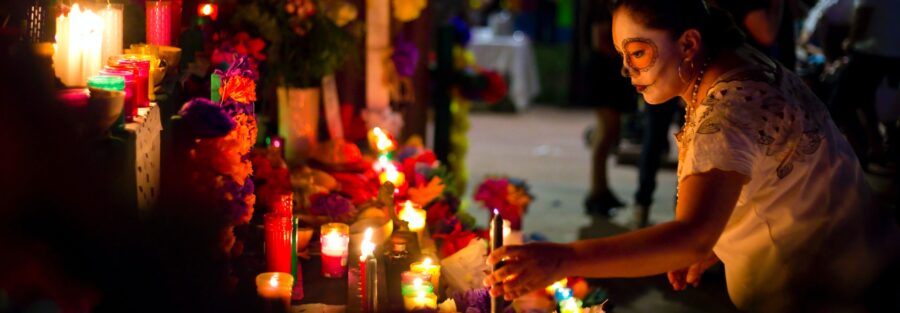You might have some misconceptions about Mexican culture, so there’s something you should know. Día de los Muertos is not “Mexican Halloween”. Instead of kooky haunts and scary movies, think holy reverence and commemoration of the dead.
What is Día de los Muertos?
On Día de los Muertos, the spirits of the dead return to earth to fraternize with us once more. The hallowed traditions of this holiday are a sacred affair, running deep through the roots of Mexican culture. It’s a celebration of the lives of those we’ve lost, at the heart of which lies the belief that death does not separate us. The spirits of our loved ones are kept alive by our hearts and memories.
When is it?
Day of the Dead, actually spans over two days- November 1 and 2. The first day is reserved for the observance of deceased children, who are referred to as angelitos (little angels). The second day celebrates adults who have passed on.
Where did it come from?
Like many Mexican traditions, Día de los Muertos is a fusion of indigenous and European customs. It combines ancient practices from the devotion of the Mesoamerican goddess of death, Mictecacihuatl, with ceremonies from the Catholic tradition of All Saints’ Day.
How do you celebrate?
You may assume a holiday about death would be sullen and morose, but the festivities of Day of the Dead are anything but. While the details of each custom vary from region to region, they all share something in common. Día de los Muertos isn’t defined by grief. It’s a celebration of the lives lived by those who have passed.
These are some of the elements you might find in a typical Day of the Dead celebration.
Ofrendas
La Ofrenda refers to an altar used to honor the dead. Personalized to deceased individuals, every ofrenda is different. Altars always include personal items such as photographs and cherished belongings. It is also typical to include food and drinks that they enjoyed in life.
Food
Calaveras de Azúcar, or sugar skulls, are probably the most iconic food relevant to Day of the Dead. They’re mostly decorative though, unless you’re a fan of chewing through mouthfuls of hardened sugar. If you prefer something a bit more edible, there’s pan de muerto. (A delicious sweet bread flavored with anise and orange.) Dip it in chocolate caliente for the full experience. Other traditional foods include tamales, mole negro, and red pozole
Calaveras
The word calavera means skull, and if you know anything about Mexican culture, you’ve seen these brightly colored beauties. Much like Day of the Dead itself, Mexican calaveras represent death with color and cheer instead of macabre gloom. They are bold and ornate depictions of the human skull, adorned with stunning, detailed designs
Mexican Marigolds
Referred to as the Cempasúchil, the Mexican marigold is the official flower of Día de los Muertos. Its stunning golden hue adorns ofrendas nationwide. Unlike most flowers, its smell isn’t sweet or floral. It’s actually musky and quite pungent. This strong aroma is what helps guide the spirits of the dead back into our world on Día de los Muertos.


